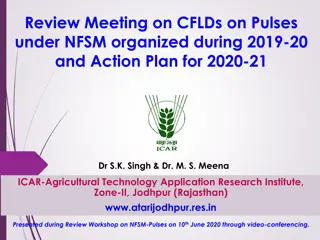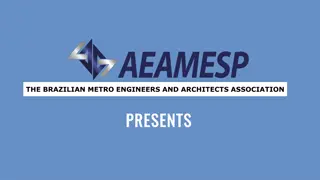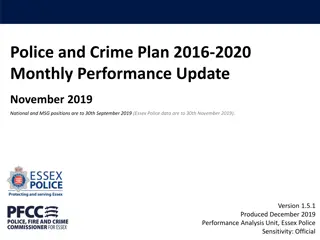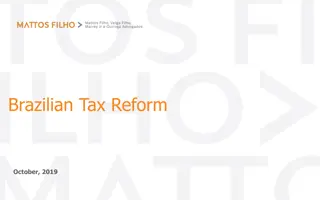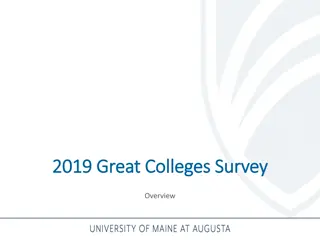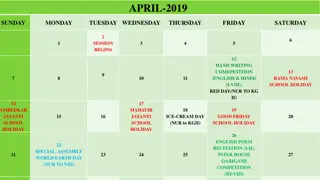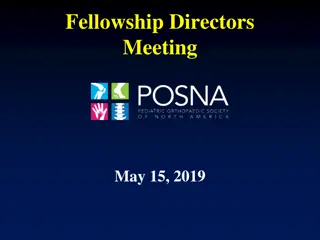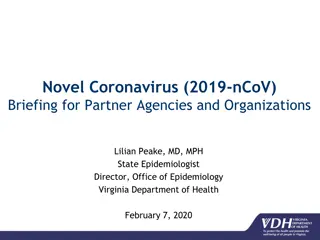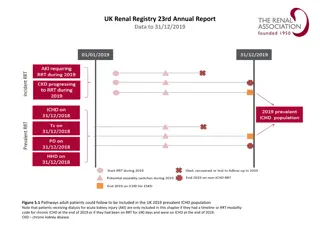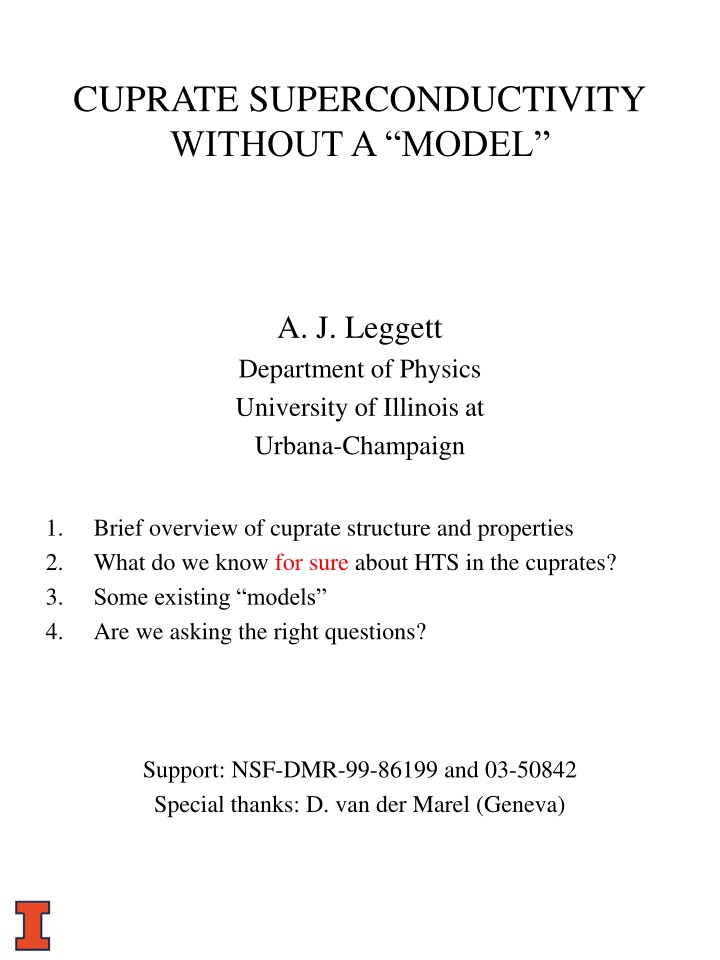
Understanding Cuprate Superconductivity Phenomenon
Explore the structure, properties, and high-temperature superconductivity in cuprates without relying on a model. Gain insights into the basic facts, phenomenology, and canonical phase diagram of cuprates. Delve into the mysteries surrounding high-temperature superconductivity in these unique materials.
Download Presentation

Please find below an Image/Link to download the presentation.
The content on the website is provided AS IS for your information and personal use only. It may not be sold, licensed, or shared on other websites without obtaining consent from the author. If you encounter any issues during the download, it is possible that the publisher has removed the file from their server.
You are allowed to download the files provided on this website for personal or commercial use, subject to the condition that they are used lawfully. All files are the property of their respective owners.
The content on the website is provided AS IS for your information and personal use only. It may not be sold, licensed, or shared on other websites without obtaining consent from the author.
E N D
Presentation Transcript
CUPRATE SUPERCONDUCTIVITY WITHOUT A MODEL A. J. Leggett Department of Physics University of Illinois at Urbana-Champaign 1. 2. 3. 4. Brief overview of cuprate structure and properties What do we know for sure about HTS in the cuprates? Some existing models Are we asking the right questions? Support: NSF-DMR-99-86199 and 03-50842 Special thanks: D. van der Marel (Geneva)
CS-2 WHAT IS SUPERCONDUCTIVITY? Basic expt: (Onnes 1911) V CuA Cu ~ S S perfect diamagnetism (Meissner effect) equilibrium effect persistent currents, astronomically stable metastable effect No a priori guarantee these two phenomena always go together! (but in fact seem to, in all superconductors known to date).
CS-3 PHENOMENOLOGY OF SUPERCONDUCTIVITY (London, Landau, Ginzburg, 1938-50) Superconducting state characterized by macroscopic wave function ? complex, Schr.-like must be single-valued mod. 2 ? r exp?i ? vector potential 2 (? r e A r ) electric current J r r (BCS: e* = 2e) MEISSNER EFFECT: exact analog of atomic diamagnetism ?? ?? = 0 ? = ??2 ?? 2 ?? ? ?? in atom, supr. 2? ? = ?0? ?2? = ?? But quality difference: ??? ?? ????! PERSISTENT CURRENTS ? ????/2? conserved unless ? across some X-section (highly unfavorable energetically) ?~ ? = conserved ?
CS-4 STRUCTURE OF A TYPICAL CUPRATE ??? 1??)2 ? copper oxide planes n= 1, 2, 3 ( homologous series ) charge reservoir spacer (alk. earth, rare-earth, Y, La .) Ex: (Tl 2212, n = 2) Cu++ O ~3.5 Ca++ Charge reservoir (Tl2Ba2O4) ~10 CuO2 plane as viewed from above: Note: Each CuO2 plane has valency 2e per formula unit, hence homologous series require spacer with +2e (i.e., typically alkaline earth (Ca++, Sr++ . . .) (Ca++) (Cu++) (O--)
CANONICAL PHASE DIAGRAM OF CUPRATES AS FUNCTION OF T AND DOPING (COMPOSITE): CS-5 Strange metal Pseudogap (UD) Tc(p) OD AF insulator ( Fermi-Liquid ) T Superconductor 0 16 0 27 p Mott Insulator In-plane doping per CuO2 unit optimal doping (p 0 18(?)) Cu Doping: e.g. Y Ba2 Cu3 O6+x, La2 x Srx CuO4 O For any given compound, can find mapping from x (chemical stoichiometry) to p (no. of holes per CuO2 unit in plane) which makes phase diagram and properties per plane approx. universal, : but difficult to check directly.
CS-6 SOME BASIC FACTS ABOUT CUPRATES 1. Until 2014, unique in showing (reproducible) supy at T> 60 K. (>200 different materials). (2014: metal hydrides, T ~ 200K!). 2. However, some cuprates which can never be made superconducting (multilayers spaced by Sr or Ba). 3. Both N and S state props. highly anisotropic (e.g., in Bi 2212, c/ ab ~105) 4. Many N-state props. very anomalous (e.g., ab ~T, H ~a + bT2). (S: rather normal !) 5. Most N- (and S-) state props. approximately consistent with hypothesis that at given doping, properties of CuO2 phase are universal. ( : transport properties prob. sensitive to near-plane disorder, e.g. La2 xSrxCuO4.) 6. When S state occurs, v. sensitive to doping and pressure, (e.g., Hg 1201: Tc = 95 120 K) Atm. 20 GPa 7. For Ca-spaced homologous series, Tc always rises with layer multiplicity n up to n = 3, thereafter falls slightly. (?) 8. Macroscopic EM props of S state show large fluctuations, esp. in high magnetic fields (extreme type-II) R T Tc
CS-7 WHAT DO WE KNOW FOR SURE ABOUT SUPERCONDUCTIVITY IN THE CUPRATES? 1. Flux quantization and Josephson experiments ODLRO in 2-particle correlation function, i.e., superconductivity due to formation of Cooper pairs, i.e.: basic topology of many-body wave function is ~A{ (r1r2 1 2) (r3r4 3 4) . (rN 1rN N 1 N)} antisymmetrizer Same molecular wave function for all pairs (quasi-BEC!) For most purposes, more convenient to work in terms of related quantity +? 1??2 +? 2 ?(?1?2?1?2) ??1 pair wave function (anomalous average) Note: Macroscopic wave function of Ginzburg and Landau, (R), is just F(r1r2 1 2) for 1= 2= +1, r1 = r2 = R, i.e. wave function of COM of Cooper pairs.
CS-8 WHAT DO WE KNOW FOR SURE ? (CONT.) 2. Universality of HTS in cuprates with very different chemical compositions, etc. Main actors in superconductivity are electrons in CuO2 planes. triplet 3. NMR ( s, T1 ) spin wave function of Cooper pairs singlet not triplet, i.e. s singlet T Tc 1 ? ?1?2?1?2~ 2 ) ? ? 1,? 2 4. Absence of substantial FIR absorption above gap edge pairs formed from time-reversed states 5. Order-of-magnitude estimate from (a) Tc and (b) Hc (in-plane) radius of Cooper pairs ~ a few lattice spacings. (thus, o / a ~ 3-10: contrast ~ 104 for A pair radius fluctuations much more important than in e.g. A inter-cond. electron spacing
CS-9 WHAT DO WE KNOW FOR SURE ? (cont.) 6.Josephson (phase-sensitive) experiments at least in YBCO, Tl-2201, NCCO. . . . symmetry of pair wave function is dx2 y2 + + i.e. odd under /2 rotn in ab-plane, even under refln in a- or b-axis (in bulk: near (110) surface, d + is?) + + [ : Li et al.] 7. c-axis resistivity hopping time between unit cells along c-axis /kBT pairs in different multilayers effectively independent (but cf. Anderson Interlayer Tunneling theory) 8. Absence of substantial isotope effect (in higher Tc cuprates) + folk-theorems on Tc phonons do not play major role in cuprate superconductivity. ( Newns and Tsuei) : NOTE: AT LEAST 95% OF LITERATURE MAKES ALL OF ABOVE ASSUMPTIONS AND A LOT MORE e.g. 2d Hubbard, t-J, gauge field all special cases of generic Hamiltonians based on these features.
CS-10 HOW WILL WE KNOW WHEN WE HAVE A SATISFACTORY THEORY OF HTS IN THE CUPRATES? Thesis: We should (at least) be able to: (A) give a blueprint for building a robust room-temperature superconductor, OR (B) assert with confidence that we will never be able to build a (cuprate-related) RT superconductor OR (C) say exactly why we cannot do either (A) or (B) In the meantime, a few more specific questions: (1) Are the cuprates unique in showing HTS? (2) If so, what is special about them? (e.g. band structure, 2-dimensionality, AF ) (3) Should we think of HTS as a consequence of the anomalous N-state properties, or vice versa? (4) Is there a second phase transition associated with the T* line? If so, what is the nature of the LT ( pseudogap ) phase? (5) If yes to (4), is this relevant to HTS or a completely unconnected phenomenon? (6) Why does Tc depend systematically on n in homologous series?
SOME REPRESENTATIVE CLASSES OF MODELS OF COOPER PAIRING IN THE CUPRATES (conservative exotic): CS-11 1. Phonon-induced attraction ( BCS mechanism ) problems: N-state ab(T) T down to T~10 K (Bi-2201 Tc) no isotope effect in higher Tc HTS folk-theorems on Tc (but : metal hydrides) 2. Attraction induced by exchange of some other boson: spin fluctuations excitons fluctuations of stripes more exotic objects 3. Theories starting from single-band Hubbard model:* +???+ ?.?. + ? ? = ? ??? ?? ?? ?,?= ?? ? hopping on-site repulsion a. Attempts at direct solution, computational or analytic b. Theories based on postulate of exotic ordering in groundstate (e.g. spin-charge separation) Problems: to date, no direct evidence for exotic order T* line appears to be unrelated to Tc (and, Nature has no duty . ) *See e.g. P.A. Lee, Reps. Prog. Phys. 71, 012501 (2008)
CS-12 ENERGY CONSIDERATIONS IN THE CUPRATES (neglect phonons, inter-cell tunnelling) ? = ?( )+ ? + ?? Inter-conduction e Coulomb energy (intraplane & interplane) In-plane e KE Potential ex of cond.n e s in field of static lattice AND THAT S ALL (DO NOT add spin fluctns, excitons, anyons ) At least one of ? , ? , ?? must be decreased by formation of Cooper pairs. Default option: ?? Rigorous sum rule: 1 ?? ~ ?? ?? Im 1 + ?? ?(??) bare density response function Coulomb Interaction (repulsive) 1 3?: ?? ?? Im (??) WHEREINTHESPACEOF (q, ?) ISTHECOULOMBENERGY SAVED (ORNOT)? THISQUESTIONCANBEANSWEREDBYEXPERIMENT! (EELS, OPTICS, X-RAYS)
CS-13 HOW CAN PAIRING SAVE COULOMB ENERGY? 1 ~ Im V dq d c + 1 ( ) V q q o [exact] bare density response function , ) ~1 F T k k Coulomb interaction (repulsive) A 1 ~ min ( ( FT ) eff A. (typical for ) ( ) 1 q o V q q q pertn-theoretic result + = Im ( ) V V d q V c q o q q q q o , V to decrease must decrease q q o c q * p q ~ but p q + /2 /2 q q p pairing gap should change sign (d-wave?) B. (typical for ) ( ) 1 q o V q ( FT ) eff q q 1 1 ( ( Im ) note inversely proportional t o . V V c q ) q V q q o to decrease (may) increase c V , Im ( ) oq q and thus (possibly) q q o increased correlations increased screening decrease of Coulomb energy!
CS-14 ELIASHBERG vs. OVERSCREENING k' interaction fixed k' ELIASHBERG k k electrons have opposite momentum (and spin) REQUIRES ATTRACTION IN NORMAL PHASE interaction modified by pairing k3 k4 OVERSCREENING + o o o k1 k2 electrons have arbitrary momentum (and spin) NO ATTRACTION REQUIRED IN NORMAL PHASE
CS-15 ? ?,? ?? ? ?? ? ~ + ?2? ????Im 2 1 + ?? ??? * WHERE in the space of q and is the Coulomb energy saved (or not)? * WHY does Tc depend on n? In Ca-spaced homologous series, Tc rises with n at least up to n=3 (noncontroversial). This rise may be fitted by the formula (for not too large n) 1 ~ ????? 1 1 (?) ?? ?? (controversial) ? Possible explanations: A. ( boring ): Superconductivity is a single-plane phenomenon, but multi-layering affects properties of individual planes (doping, band structure, screening by off-plane ions ) B. ( interesting ): Inter-plane effects essential 1. Anderson inter-layer tunnelling model 2. Kosterlitz-Thouless 3. Inter-plane Coulomb interactions in-plane wave vector WEKNOW THEY RE THERE! ????? ~ ? 1exp ?? intra-multilayer spacing ~3 5 If (3) is right, then even in single-plane materials, dominant region of q is q < d-1!! Where in is energy saved? (REMEMBER WILLIE SUTTON )
N STATE CS-16 MIR OPTICAL + EELSSPECTRAOFTHECUPRATES A. OPTICS. Plot in terms of loss function ? ? ?m 1? : (damped) plasmon L( ) 0 001eV 0 01eV 0 1eV 1eV 10eV (logarithmic scale) transmission B. (a) early work, TEELS (late 80 s and 90 s): Confirms q 0 shape of the loss function and verifies that (roughly) same shape persists for finite q(at least up to ~0 3 1) (b) very recent work (REELS) (Abbamonte group, arXiv: 1903.04038 reflection EELS finds very broad plasmon for q ~0 18 1, for higher q featureless spectrum (but still strong). SOTHAT SWHERETHEMONEYIS! Digression: This strong peaking of the loss function in the MIR appears to be a necessary condition for HTS. Is it also a sufficient condition? No! Counter examples: a) BKBO (not layered) b) layered (2D) materials! La4-xBa1+xCu5O13 La2-xSr1+xCu2O6
CS-17 TOTEST MIR SCENARIO: Ideally, would like to measure Changes in loss function ?? 1 (??) across superconducting transition, for 100 meV< <2eV, and ALL q< d-1( 0 3 -1) NB: for q > d-1, no simple relation between quantity Im (1 + Vq o (q ))-1 and loss function. Possible Probes: 1) Optics (ellipsometry) 2) Transmission EELS 3) Inelastic X-ray SC G transverse, arb. but q 0 3 1 long l, arb. q, Existing experiment: Optics*: small (~1 2%) change on crossing Tc in less function integrated across MIR region: positive in underdoped regime, negative in overdoped regime. EELS: recent Abbamonte group data shows doping-dependence similar to optics, but with onset substantially above Tc. *Levallois et al. (inc. AJL), Phys. Rev. X 6, 031027 (2016)
THEMIDINFRARED SCENARIOFOR CUPRATE SUPERCONDUCTIVITY: CS-18 Superconductivity is driven by a saving in Coulomb energy resulting from the increased screening due to formation of Cooper pairs. This saving takes place predominantly at long wavelengths and midinfrared frequencies. PROS: 1. No specific model of low-energy behavior required 2. Natural explanation of a. why all known HTS systems are strongly 2D b. why all known HTS systems show strong and wide MIR peak c. trends of Tc with layering structure in Ca-spaced cuprates d. absence of superconductivity in bilayer Ba/Sr-spaced cuprates. e. huge (~100 BCS) effects of superconductivity on optical properties in 1 3 eV range. 3. Unambiguously falsifiable in EELS experiments. CONS (as of May, 2019): 1. No explicit gap equation constructed: KE cost too great? 2. No explanation of origin of MIR spectrum 3. Connection (if any) to low-energy phenomenologies unclear. 4. optical experiments indicate falsified for UD regime (but OK for OD). CONSEQUENCESIFTRUE: All 2D Hubbard, t-J models etc. unviable Crucial property of normal state is MIR spectrum (most other properties are incidental May suggest HTS candidates other than cuprates .


